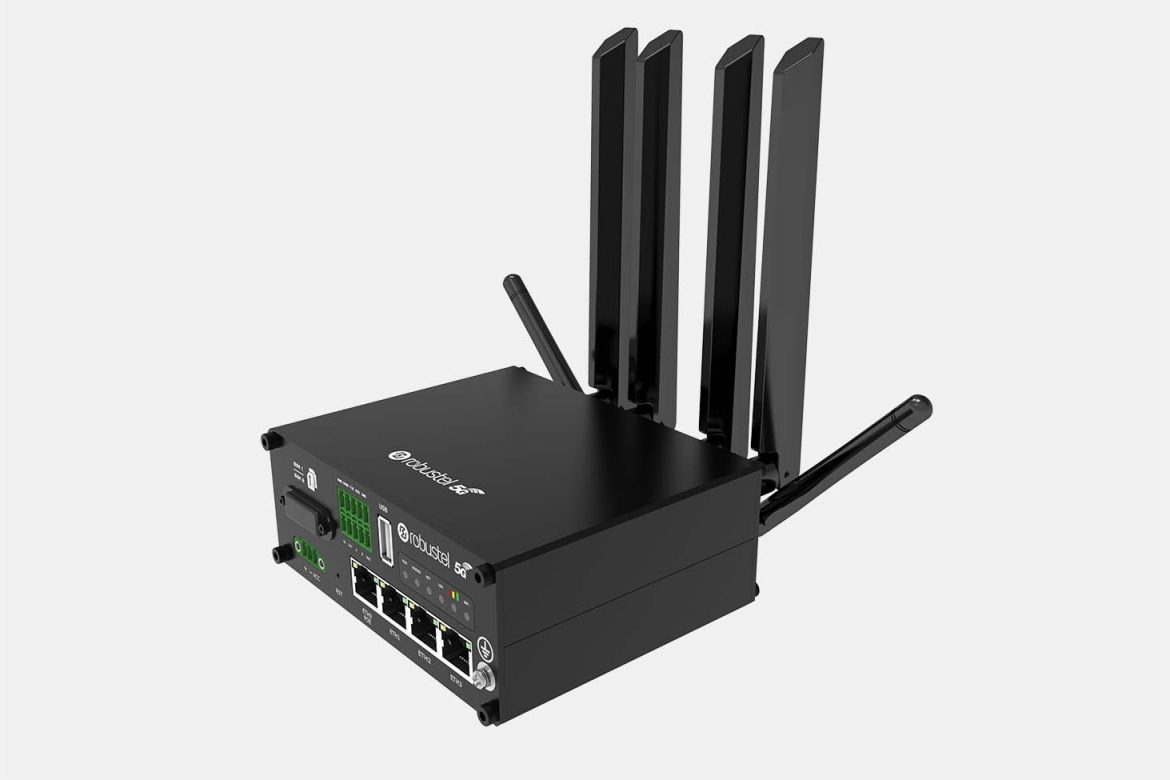We’ve talked a lot in recent weeks about 4G broadband and how it can solve many Wi-Fi issues in rural areas and homes with a slow BT Openreach connection.
But of course, the question on everyone’s lips when we talk about 4G routers and mobile broadband is ‘when will there be a 5G router?’
One product we’re feeling particularly excited about is the Robustel R5020. This router is touted to be offering next-generation cellular connectivity at a competitive price.
The R5020 will enable rapid deployment of high speed IoT applications in sectors such as Transportation, Enterprise Connectivity and Digital Signage.
In a compact industrial unit, the R5020 will offer 3G, 4G/LTE and 5G band coverage.
What are the key features?
Here are the key features of the Robustel R5020 5G router.
A router with 5G capability
As Robustel’s first 5G capable router, the R5020 will also be capable of supporting 4G and 3G bands.
A stable operating system
Powered by their tried and tested CPU platform, the R5020 uses their mature and stable in-house Operating System RobustOS. This OS is fully programmable with a fully documented Software Development Kit. It also comes with a free cloud management platform (RCMS).
Applications
The R5020 is designed for use by various applications.
In-vehicle applications
- Passenger Wi-Fi
- CCTV de-brief
- Ticketing
- Other similar “onboard” requirements
Potentially increase internet speeds in these scenarios with the R5020, as well as future-proofing your current installations by making them 5G compatible. The R5020 has achieved E-Mark* certification for in-vehicle use, and supports GNSS (Global Navigation Satellite System) positioning. There is also a version to protect vehicle batteries with vehicle ignition sensing when the engine is turned off.
Broadband Failover
- As well as a 5G Router, the R5020 can be configured to use Ethernet or Wi-Fi as the primary internet source. Should there be an outage on either of these, it can then failover to 4G or 5G.
- If your business is a shop or small office, this can provide a good degree of connectivity resilience at a reasonable cost.
- It can provide sufficient bandwidth for multiple users.
- Core networks can utilise connections from IPSEC (Internet Protocol Security), DMVPN (Dynamic Multipoint VPN) and Open VPN (Virtual Private Networks) protocols.
Primary Broadband
- You might think that using mobile broadband would be a pricey alternative, but mobile networks are now offering unlimited 5G tariffs at reasonable prices.
- This means that hundreds of Mbps internet are available over the air.
- There are many technical and commercial scenarios that make a wireless internet connection a favourable option, and mobile broadband offers another level of connectivity on top.
For more information on this product, or to register your interest in it when it’s available, head to their website.
If you would like more information on how 4G broadband could make a difference to your connectivity, please get in touch with our Wi-Fi experts here at Geekabit. We have a 4G antenna testing pole so we can assess whether 4G would be a viable option for your premises.
*An e-Mark proves your vehicle or component complies with the relevant EU/ECE regulations and can be sold in the EU, as well as other regions which have signed up to the ECE vehicle regulations. EU type approval is mandatory for whole vehicles as well as a range of automotive systems and components









